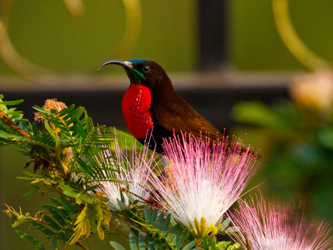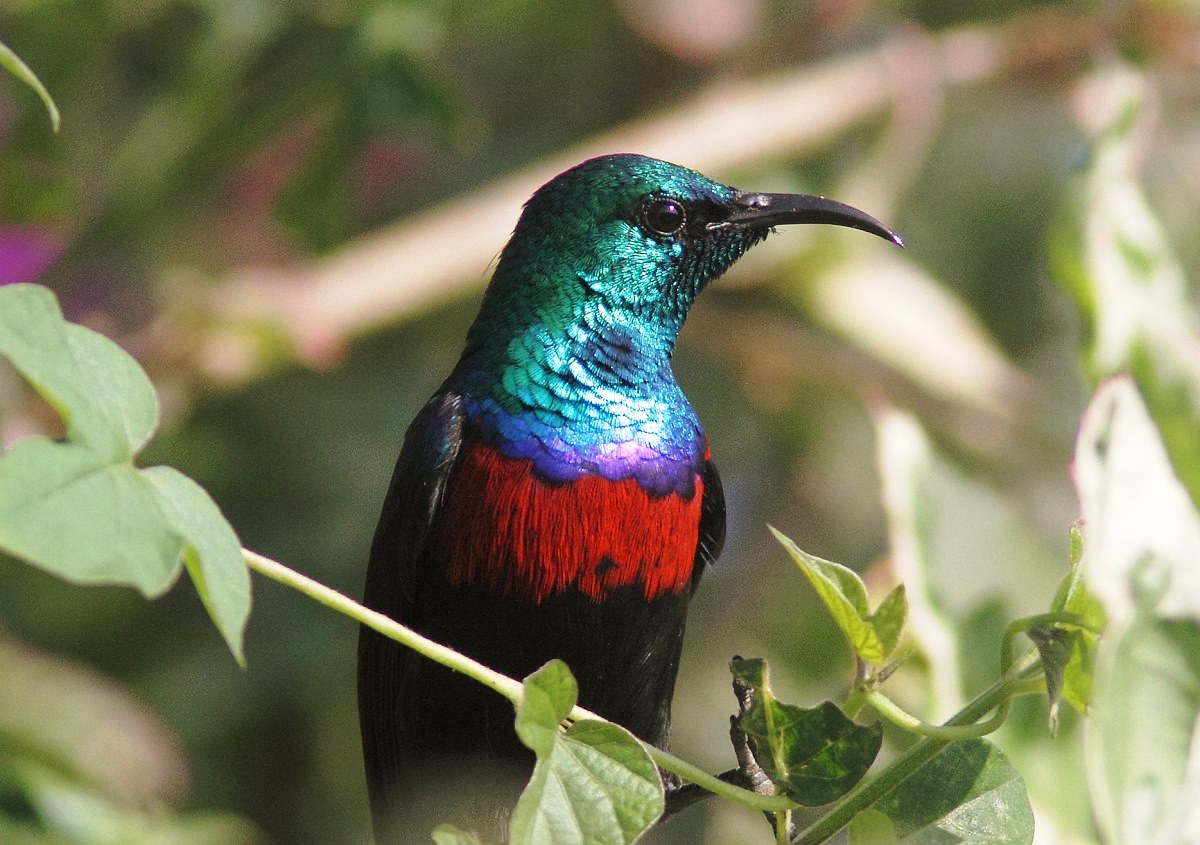Uganda has for a very long time earned and maintained a status as being the most diverse and uniquely endowed tourist destination in the entire African continent. Regarded as a bird watchers’ paradise, this relatively small East African country (size of the state of Oregon) has proven to many as an amazing destination for birders from different walks of life.
Though not holding many country endemics, the unusually high number of bird species per square kilometer, and the ease to the variably lush vegetation, makes Uganda amongst the top birding destinations in the whole word. For all those taking their first birding trip outside the Americas, Europe or Asia, you will most likely double your life list of birds.
Uganda alone boasts of an incredible bird list of 1046 recorded and confirmed species of birds, representing over 10% of the world’s bird list and over 50% of all the birds found on the African continent.
For all the bird enthusiasts out there, when you think of taking a birding tour to Uganda, you should not miss to include the following bird watchers’ hotspots in your birding itinerary:
Bwindi Impenetrable Forest National Park
It takes pride with its total of 357 bird species recorded; 23 of which are endemic to the Albertine Rift, and 14 species recorded nowhere else among them the brown-necked parrot, African green broad bill, white-bellied robin chat, African Broadbill, shelleys Crimsonwing, dusky long-tailed cuckoo, yellow-footed flycatcher, purple-breasted sunbird, Lagdens Bushshrike, dusky crimsonwing, dwarf honeyguide, oberlaender’s ground thrush, Kivu ground thrush, papyrus yellow warbler, African green-broadbill, gruaer’s rush warbler, purple-breasted sunbird, short-tailed warbler, white -tailed blue flycatcher and Frazer’s eagle owl. The park is a UNESCO’s World Heritage Site partly because of inhabiting half of the world’s only remaining mountain gorillas.
Semliki National Park
This lowland tropical rainforest is popular for attracting and hosting the eastern Congo Ituri forest species. Most species found here are not well represented in any other Ugandan lowland forests. The most interesting bird species here include among others; Crested Malimbe, capuchin babbler, zenker’s honeyguide, chestnut-bellied helmetshrike, Bates nightjar, red-eyed puffback, hartlaub’s duck, yellow-throated nicator, Xavier greenbul, swamp palm greenbul, chestnut owlet, eastern-bearded greenbul, fiery- breasted bush-shrike, forbe’s plover, gabon woodpecker, grant’s bluebill, grauer’s cuckoo-shrike, long-tailed hawk, orange-tufted sunbird, pale-fronted negrofinch, red-bellied malimbe, Sassi’s olive greenbul, dusky nightjar, spotted honeyguide, white-crested hornbill, and white-bellied kingfisher.
Murchison Falls Conservation Area
This includes Murchison falls national park and the Budongo forest extension. The park alone is a home to over 460 bird species including the peculiar shoebill stork that is normally seen on a boat ride along the marshy stretch of the Nile River towards the Delta. Birds like Abyssinian ground hornbill, Verreaux’s Eagle owl. Marsh tchagra, pennant-winged nightjar, African crake, red- throated bee-eater, standard winged nightjars, Speckle-breasted woodpecker, standard-winged nightjar, bronze-tailed glossy starling, dusky babbler, yellow-bellied hyliota, Brown-rumped bunting, Heuglin’s masked weaver, black-backed cisiticola, orange- winged pytilia, parasitic weaver, ring-necked francolin, and a wide variety of raptors and water birds are found here.
home to over 460 bird species including the peculiar shoebill stork that is normally seen on a boat ride along the marshy stretch of the Nile River towards the Delta. Birds like Abyssinian ground hornbill, Verreaux’s Eagle owl. Marsh tchagra, pennant-winged nightjar, African crake, red- throated bee-eater, standard winged nightjars, Speckle-breasted woodpecker, standard-winged nightjar, bronze-tailed glossy starling, dusky babbler, yellow-bellied hyliota, Brown-rumped bunting, Heuglin’s masked weaver, black-backed cisiticola, orange- winged pytilia, parasitic weaver, ring-necked francolin, and a wide variety of raptors and water birds are found here.
Budongo Forest is famous for providing prime forest birding in the whole of Africa. Birding along the Royal Mile has been rated by many as the no. 1 birding spot in the entire African continent. Working through mixed flocks of African greenbuls, skulking alethes and the elusive illadopses is so fascinating. Xavier’s greenbul, Madagascar lesser cuckoo, Black-shouldered nightjar, Nahan’ Francolin, Puvel’s Illadopsis, crested francolin, chocolate-backed kingfisher, Ituri batis are amongst the many specialities found here. The Kanio Pabidi and the Busingiro sections of this Forest reserve are far much re-assuring!
Kibale Forest National Park
Home to 13 primate species including the chimps, Kibale is another excellent hub to spot many birds including some of the albertine rift regional endemics. The stunning black bee-eater, Nahan’s francolin, Cassin’s spine tail, green-breasted pitta, African Pitta, Abyssinian ground thrush, Red-winged francolin, Black-eared ground thrush, Red-faced crimsonwing, grey-headed oliveback, speckle-breasted woodpecker, white-nape pigeon, black-bellied seed cracker, white-collared oliveback are some of the bird species one should look for in this forest.
Queen Elizabeth Conservation Area
The park boasts of having the richest biodiversity than any other national reserve in Africa. It is the second biggest after Murchison falls conservation area with the highest number of recorded bird species than all the African national parks and most probably the whole world, with a total of more than 611 bird species. It is a home to 54 raptors, hosts every water bird found in Uganda, savanna, woodland and forest birds. The rare Beaudouin’s snake-eagle, broad-tailed paradise whydah, collared palm-thrush, semi-collared flycatcher, Wahlberg’s honey-guide, Caspian Plover, speckle-breasted woodpecker, Blue Quail, fan-tailed grass-bird, short-tailed pipit, Lowland akalat, Madagascar lesser cuckoo, striped crake, yellow-bellied wattle-eye, Madagascar pond heron, etc are all found here.
Kidepo Valley National Park
Uganda’s untapped wilderness spectacle of unique habitats with associated fauna and flora. Driving through this park is like exploring the Masai Mara and the Serengeti of 100 years ago. The birdlife is rich with a recorded bird list of 486. There over 60 bird species listed here and have not been recorded in any other Ugandan national Park. The park is outstanding for its birds of prey. Of 58 species recorded, 14 are believed to be endemics to the region. Among those are Verreaux’s eagle, Egyptian vulture, lesser Kestrel and pygmy falcon. Other interesting species include birds like the karamoja apalis, kori bustard, red-billed hornbill, yellow-billed and Jackson’s hornbill, Abyssinian nightjar, brown-rumped bunting, Quail plover, Black-breasted barbet, black-faced firefinch, brown-backed woodpecker, clapperton’s francolin, emin’s shrike, heuglin’s wheatear, jameson’s firefinch, orange-winged pytilia, red-winged pytilia, ring-necked francolin, swallow-tailed kite, and three-streaked tchagra.
Other important sites for specialities include: Mabamba wetland which is famous for the awe-inspiring Shoebill; Lake Mburo National Park which hosts some of the Northern Tanzania rarities including the Red-faced Barbet, Crested Barbet, Emerald-spotted wood-dove, Tabora Cisticola, the rare African Finfoot etc; Imaramagambo Forest, Mgahinga Mountain National Park for the stunning Rwenzori Turaco; Mabira Central Forest Reseve which hosts some of the Eastern Congo Biome Species; and the Entebbe Botanical Gardens for an introduction to the afro- tropical species of Uganda





